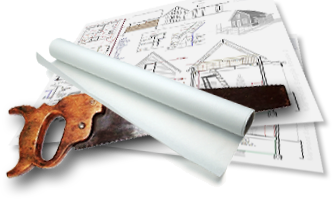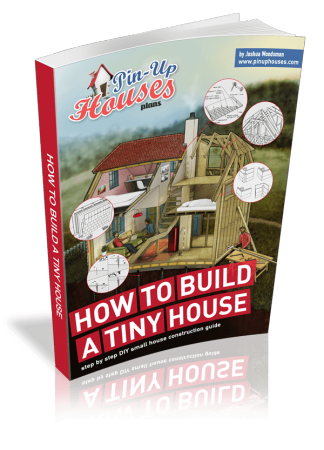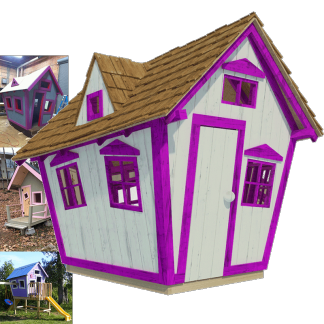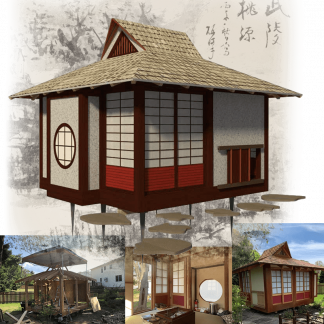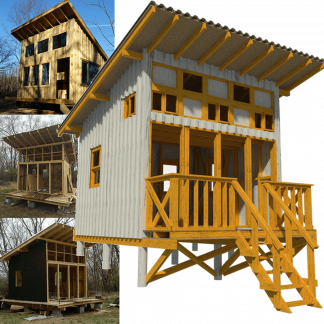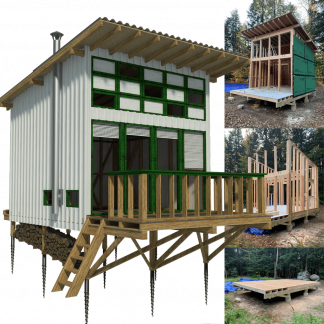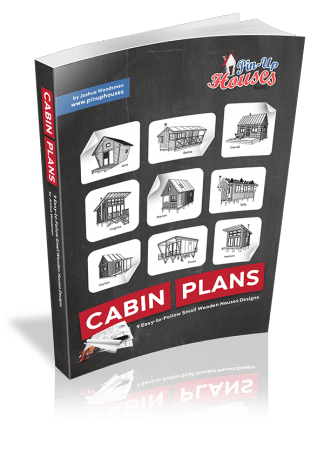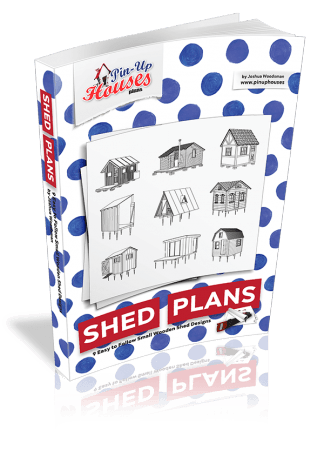Introduction
When you are designing a tiny home or cabin, every detail matters, especially the roof. A good roof does more than protect your home from the elements; it also impacts energy efficiency, aesthetics, and long-term maintenance costs. For smaller builds, you want something that is lightweight, durable, and fits the character of your space. Whether your tiny home sits in the woods, near the water, or off the grid, choosing the right roofing material will make all the difference. In this guide, we will explore the best roofing options for tiny homes and cabins, including their pros, cons, and general cost ranges to help you make an informed decision.
Metal Roofing
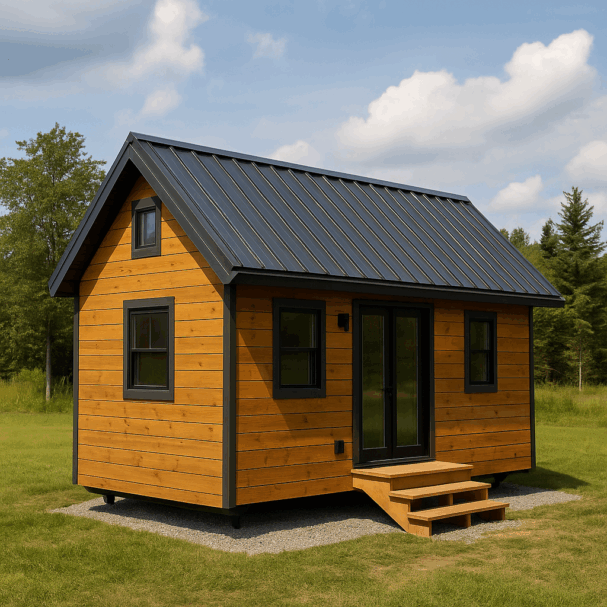
Pros
Metal roofing is one of the most popular choices for tiny homes and cabins, and it is easy to see why. It offers exceptional durability, often lasting 40 to 70 years with very little maintenance. The smooth surface allows rain and snow to slide off effortlessly, which makes it perfect for off-grid, rural, or seasonal properties. Metal roofs also reflect sunlight, helping to keep interiors cooler during the summer months. Because they are lightweight, they place minimal stress on small structures, and with a wide range of colours and profiles available, it is easy to find a look that complements any tiny home or cabin design.
Cons
The main drawback is the upfront cost, which can be higher than other materials. However, the long lifespan and low maintenance often offset that investment over time. Some lower-quality metal panels can also be prone to noise during heavy rain or hail, though proper insulation minimizes this issue.
Cost
Expect to spend between $8 and $14 per square foot installed, depending on the style and metal type.
If you are curious about long-term savings and performance, you can learn more from our guide on metal roofing benefits.
Asphalt Shingles
Pros
Asphalt shingles are the most common roofing material in Canada and the USA, known for being easy to install, repair, and replace. They come in a wide variety of colours and textures, making them a versatile choice for small homes and cabins. Their affordability is another advantage, especially if you are building on a budget or looking for a quick installation.
Cons
The main drawback is their relatively short lifespan, typically lasting between 15 and 25 years, along with their vulnerability to extreme weather. Shingles can curl, crack, or blow off in strong winds, making them less suitable for cabins in remote or exposed areas. They also tend to absorb heat, which can make small spaces warmer during the summer months.
Cost
Asphalt shingles are one of the most affordable options at around $4 to $7 per square foot installed.
For homeowners wondering how installation works, check out our asphalt shingle installation guide.
Cedar Shakes
Pros
Cedar shakes offer a timeless, rustic charm that fits perfectly with cabins and tiny homes surrounded by nature. They provide natural insulation and are surprisingly durable when maintained properly. Cedar is a renewable resource and biodegradable, making it a good choice for eco-conscious builders.
Cons
Cedar requires regular upkeep, including cleaning, staining, and sealing to prevent moss growth and rot. It is also one of the more expensive roofing options and may not be permitted in areas with strict fire codes unless treated with a fire retardant.
Cost
Cedar shakes typically cost between $10 and $16 per square foot installed.
EPDM Rubber Roofing
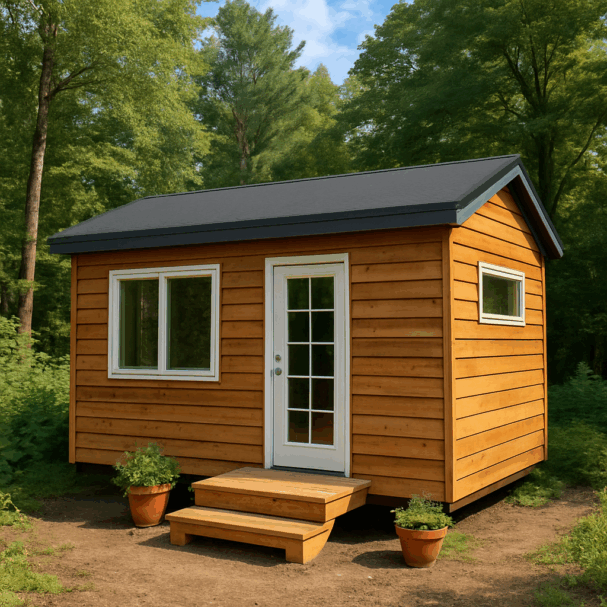
Pros
EPDM, or ethylene propylene diene monomer, is a rubber roofing material commonly used on tiny homes with low-slope or flat roofs. It is affordable, lightweight, and easy to install. EPDM is also energy efficient and weather resistant, making it a smart option for off-grid or mobile tiny homes.
Cons
The aesthetic appeal is limited since it usually comes in black or white sheets. Over time, it may require resealing at seams or edges, particularly in regions with frequent freeze-thaw cycles.
Cost
EPDM roofing ranges from $5 to $9 per square foot installed.
Considering Metal for Your Tiny Home or Cabin?
If you have questions about which type of metal roof is right for your home, business, or off-grid cabin, you can always reach out to the Metal Roof Experts team. We are known for providing free value and honest advice upfront, so you can make the best decision possible for your property. Whether you are comparing standing seam and corrugated styles or trying to figure out what fits your build, we get asked these questions all the time and are always happy to help.
If you are still in the planning or building stage and want to learn more before deciding on a roofing material, check out our article Six Things Most Homeowners Get Wrong About Building a Smaller Off-Grid Home. It is a quick, helpful read that clears up some common misconceptions and offers practical tips for small and sustainable builds.
Comparing Roofing Options for Tiny Homes and Cabins
Choosing the right roofing material for your tiny home or cabin depends on your priorities whether it’s cost, durability, sustainability, or aesthetics. Below is a quick breakdown of how each option compares so you can decide which one fits your needs best.
Each roofing type has unique strengths. For longevity and low upkeep, metal roofing is hard to beat. Asphalt shingles remain a solid budget-friendly option, while cedar shakes bring unmatched character for those who love a natural aesthetic. EPDM rubber roofing is ideal for smaller, low-pitch roofs often found on mobile or off-grid homes.
Conclusion
When it comes to tiny homes and cabins, the best roof is one that fits your lifestyle, budget, and climate. Metal roofing remains a top choice for its durability, energy efficiency, and low maintenance, while asphalt shingles and cedar shakes bring charm and affordability to the table. If you are going off-grid or want a simple, lightweight solution, EPDM rubber might be the right fit.
Whatever you choose, remember that your roof is more than just a protective layer, it is an investment in your home’s comfort and longevity. With the right material and proper installation, your tiny home or cabin can stay safe and stylish for decades to come.

